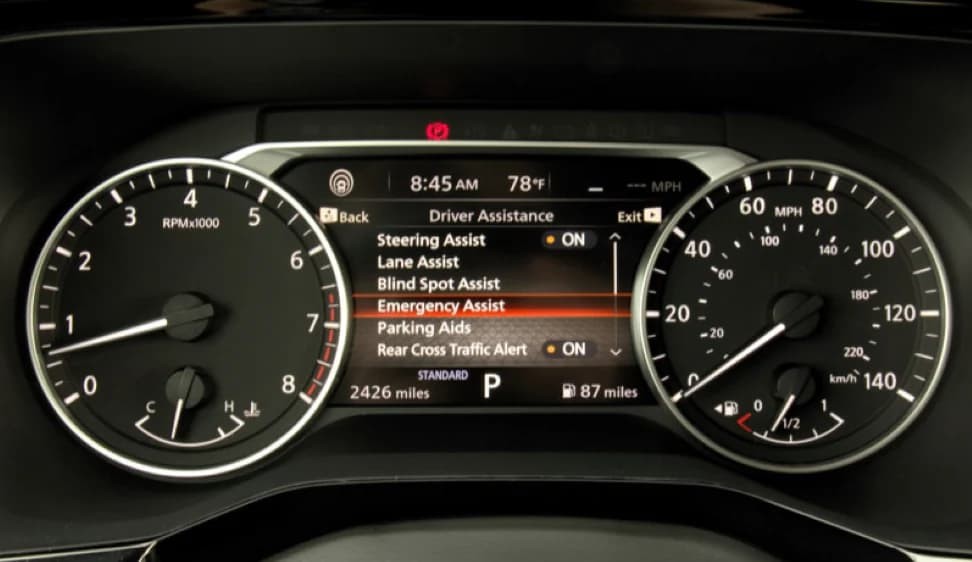Shopping for a used car can be an exciting yet daunting process. Among the many factors to consider, mileage stands out as a significant point of concern for most buyers. It’s natural to wonder, “How many miles on a car is too much?” This comprehensive guide will delve into the world of used car mileage, providing you with the knowledge to make informed decisions. We’ll explore what constitutes good mileage, high mileage, and how this crucial metric truly impacts a vehicle’s longevity and value.
Decoding Used Car Mileage: What’s Considered Good?
When evaluating the mileage of a used car, a useful benchmark is the average annual mileage accumulation. A typical vehicle is driven approximately 10,000 to 12,000 miles each year. To assess if a used car has “good” mileage, you can compare its odometer reading against its age. For instance, if you’re considering a car that’s 5 years old, ideal mileage would fall between 50,000 and 60,000 miles. Cars falling within or below this range generally indicate less wear and tear relative to their age, making them potentially more desirable.
However, remember that mileage is not the only factor. A car with slightly higher mileage but a meticulous maintenance record might be a better choice than a low-mileage vehicle with a neglected history. Factors like the car’s make, model, previous driving conditions, and documented maintenance are equally, if not more, important.
 Used car odometer showing mileage
Used car odometer showing mileage
High Mileage: Red Flag or Misconception?
The notion of 100,000 miles as the high-mileage threshold has been ingrained in car buying lore for years. Historically, crossing the 100,000-mile mark was often seen as approaching the end of a vehicle’s usable life. However, automotive engineering has advanced significantly. Modern vehicles, especially from brands like Toyota and Honda, are engineered for durability and can frequently surpass 200,000 miles with consistent and proper maintenance.
While 100,000 miles is still a point where some vehicles may require more frequent maintenance and potential repairs, it’s not an automatic death sentence. Furthermore, consider the type of mileage. A car that has accumulated 120,000 miles primarily through highway driving experiences less stress on its engine and transmission compared to a car with the same mileage driven mainly in stop-and-go city traffic. Highway miles are generally considered “easier” miles.
Why Mileage Matters: Understanding Wear and Tear
Mileage serves as a general indicator of a car’s accumulated wear and tear. Each mile driven contributes to the overall aging process of various vehicle components. However, it’s crucial to understand that the manner in which those miles were accumulated and the level of maintenance performed are equally, if not more, significant.
Consider this: a 3-year-old car with 140,000 miles predominantly driven on highways might be in better mechanical condition than a 10-year-old car with only 60,000 miles that has endured years of harsh city driving with minimal maintenance. Stop-and-go traffic, frequent braking, and idling in city environments can impose greater stress on a vehicle’s engine, brakes, and transmission.
“Too Much Mileage”: Defining the Limit
There’s no definitive mileage number that universally qualifies as “too much” for a used car. A well-cared-for vehicle with 150,000 miles, particularly from a brand recognized for its reliability, may still offer years of dependable service. Conversely, a car with even moderate mileage but a history of neglect or multiple owners could be a riskier purchase.
When you’re considering a used car with higher mileage, a pre-purchase inspection by a qualified mechanic becomes paramount. A professional inspection can reveal the true condition of the vehicle, identifying any existing or potential issues that might not be apparent during a standard test drive.
Average Mileage Expectations for Used Cars
As previously mentioned, an average annual mileage accumulation is around 12,000 miles. Therefore, when evaluating a 10-year-old vehicle, you would expect to see approximately 120,000 miles on the odometer. Significantly higher mileage than this could be considered high.
However, it’s also important to be wary of ultra-low mileage for a car’s age. While it might seem appealing at first glance, extremely low mileage can sometimes indicate that a car has been sitting idle for extended periods. This inactivity can lead to its own set of problems, such as dried-out seals, engine issues due to lack of lubrication, or brake problems from corrosion.
The Mileage-Price Connection in Used Cars
Mileage is undeniably a key determinant of used car prices. Generally, a vehicle with lower mileage will command a higher price compared to an otherwise identical car with higher mileage. For example, when comparing two cars of the same make, model, and year, the one with 30,000 miles will typically be priced higher than one with 90,000 miles, reflecting the perceived greater remaining lifespan and reduced wear.
However, this also presents an opportunity for savvy buyers. High-mileage cars, if well-maintained, can represent excellent value. You can potentially acquire a higher-quality vehicle or a more feature-rich model for a lower price simply because it has accumulated more miles.
Mileage Thresholds to Approach with Caution
While modern cars are built to last, vehicles approaching or exceeding 150,000 to 200,000 miles may be more likely to require significant repairs in the near future. This is especially true for gasoline engines. Diesel engines, however, are renowned for their longevity and durability. A diesel vehicle might comfortably exceed 200,000 miles and still have considerable life left.
Furthermore, brand reputation plays a role. Manufacturers like Honda and Toyota have consistently demonstrated a commitment to building long-lasting vehicles. Higher mileage on models from these brands might be less of a concern compared to vehicles from manufacturers with a less established reputation for longevity.
Certified Pre-Owned (CPO) Vehicles: A Mileage-Conscious Option
If mileage is a primary concern but you desire the assurance of a reliable, well-maintained vehicle, Certified Pre-Owned (CPO) programs offer a compelling solution. CPO vehicles are typically late-model cars, often just a few years old, with lower mileage restrictions. To qualify as CPO, these vehicles undergo rigorous inspections and refurbishments to meet manufacturer standards. Furthermore, they come with extended warranties, providing added peace of mind and mitigating some of the risks associated with used car purchases.
Mileage Is Just One Piece of the Puzzle
In conclusion, when considering “how many miles is too much” for a used car, there isn’t a rigid mileage limit to adhere to. While 200,000 miles is generally considered the upper end of the spectrum even for well-maintained vehicles, mileage alone should not be the sole deciding factor. A car’s maintenance history, the number of previous owners, its overall condition, and the type of miles accumulated are all equally vital considerations.
Before making a decision on a high-mileage vehicle, always prioritize a professional pre-purchase inspection. Understanding the interplay between mileage, maintenance, and overall condition will empower you to make a more informed choice and potentially secure a reliable used car that aligns with your needs and budget.
Whether you’re looking at a car with 50,000 miles or 150,000 miles, thorough research and due diligence are key to ensuring you drive away with a vehicle that provides lasting value.
